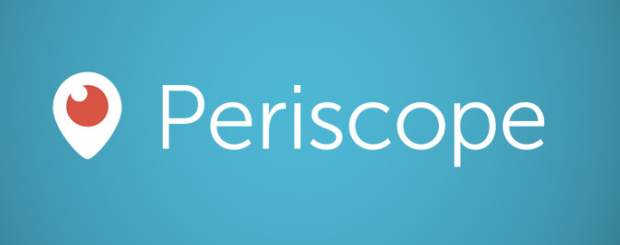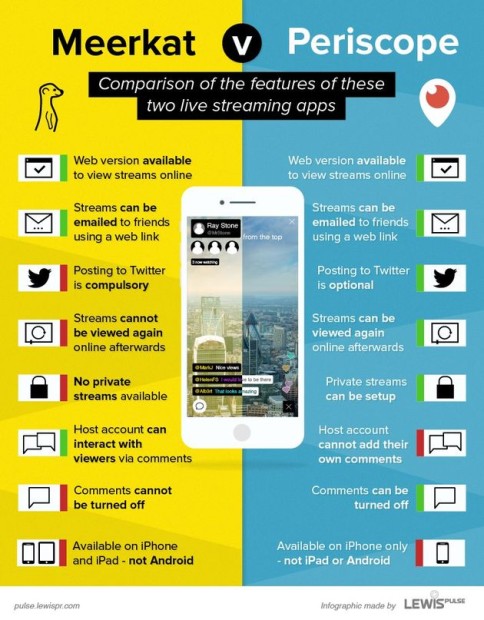 Live streaming is hot. You’ve probably seen or heard of Meerkat and Periscope by now. Who hasn’t? Will this all be just a hype or will this turn into a big change, or should I say chance, for the publishing industry for example? We’re curious and did some research to find out.
Live streaming is hot. You’ve probably seen or heard of Meerkat and Periscope by now. Who hasn’t? Will this all be just a hype or will this turn into a big change, or should I say chance, for the publishing industry for example? We’re curious and did some research to find out.
First we’ll explain a little bit about what these live streaming apps do.
You use your Twitter credentials to sign into the Meerkat app, all the commentary moves through the social network. In other words, while you’re watching someone’s Meerkat feed, you can comment on it with tweets that the broadcaster can see and respond to.
CEO and co-founder Ben Rubin explains: “Meerkat’s true potential will be breaking news. This will be realized once there is another breaking-news event as significant as the protests that took place in Ferguson, Missouri, this past summer. He foresees Meerkat as a means for conducting live, on-the-ground citizen journalism”.
Which is a big win for publishers.
Live streaming with Periscope is pretty much the same as Meerkat, there are of course a few differences (mainly feature wise) but we’ll get to that later on.

Both apps are going to change the way news is viewed and created, that’s for sure. It won’t replace TV news or anything, but it’s a development we need to watch closely.
Also, watching these streams can be confusing. There is free access to information and scenes that might be cut from live TV, which could be dangerous and those filming don’t always have the facts. It’s a whole new level of the unfiltered world. Let’s go back to the New York City explosion not so long ago, where no media had yet arrived at the scene, but where someone was live broadcasting this event.
These types of services also could have a worrying effect; instead of running to help, bystanders might stand at a distance and just broadcast what they’re seeing to the world. We’re moving into a world where broadcasting moments of human suffering could become normal – and that’s something to be aware of.
Publishers advantage
Eric van Hall (Mediaweb) listed 11 things how companies can use live streaming, for:
1. Q & A sessions
2. Turn your company inside out
3. Events
4. Product examples
5. Producte demos
6. Special offers
7. Tips & tricks
8. PR
9. Crowdsurfing
10. Customer service
11. Track clients and prospects
LewisPulse compared features of both apps and turned that into the infographic below. Use it to your advantage or better yet, just try it out. Both have their pros and cons.
In conclusion, live streaming is something you can’t ignore. We live in a world that is changing rapidly, a world in which you need to participate otherwise you’ll always be just one (or more) step(s) behind. At first we saw people going from print to web news. And then social media came along; people really got hooked on social media. The thing is, social media can’t substitute your content, it actually complements it. And that’s exactly what we do at Crowdynews. We help publishers to adapt to these changes and to get the best results while doing this.
We’d love to hear your thoughts on live streaming (apps) and how you would use it, get in touch!
